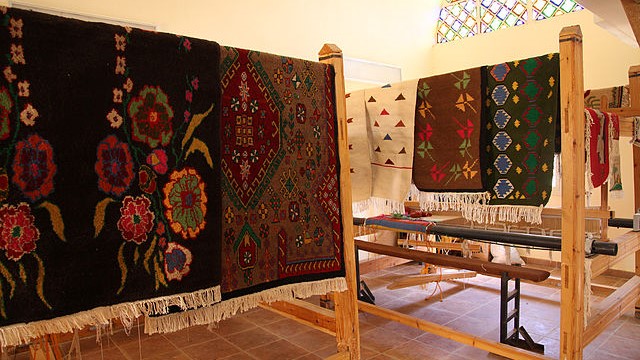In the narrow alleys of Cairo’s Khan el-Khalili bazaar, bolts of fabric hang from shopfronts in a cascade of color—deep indigos, sun-bleached ochres, and silks threaded with metallic shimmer. Vendors call out to passersby, the sound of their voices mingling with the steady clack of looms and the faint scent of dyed cotton carried on the air. Here, textiles are more than commodities. They are vessels of memory, carrying patterns, techniques, and stories that have endured for centuries.
Textile-making in Egypt has long occupied a place where artistry and necessity converge. Cotton and linen, cultivated in the fertile Nile Valley, formed the basis of daily life as well as ceremonial ritual in antiquity. Today, those same materials remain central, joined by silk and wool, to create a spectrum of fabrics distinguished by intricate embroidery, hand-dyeing, and regional motifs. Each design serves as both ornament and archive, encoding elements of identity—tribal affiliations, religious influences, or symbols of prosperity.
Artisans often describe their work as a dialogue with the past. The techniques, many unchanged for generations, are transmitted within families, with children learning by observing the steady rhythm of their elders’ hands. A single piece may require days or even weeks of labor. Embroidered cushions from Upper Egypt, for instance, draw upon centuries-old Coptic and Islamic patterns, while Bedouin weaving traditions in Sinai rely on geometric precision and bold, contrasting dyes.
In rural workshops, the process remains tactile and exacting. Wooden looms, some no more sophisticated than those used in antiquity, demand patience as threads are drawn into elaborate patterns. Dyers employ natural pigments—pomegranate rind for warm yellows, indigo leaves for deep blues—to achieve hues resistant to fading. Embroiderers sit bent over their work, needle in hand, coaxing delicate motifs into being with practiced ease. The result is not merely fabric but an object infused with the time, devotion, and heritage of its maker.
The survival of these traditions, however, depends not only on craftsmanship but also on economics. The sale of handmade textiles provides income for families in regions where industrialization has yet to take firm hold. Markets in Cairo, Luxor, and Aswan connect artisans with buyers, while international demand offers opportunities to expand livelihoods beyond village boundaries. Yet artisans often face competition from mass-produced fabrics, which threaten to erode appreciation for slower, more intricate work.
Despite these pressures, Egypt’s textile heritage endures. In homes, embroidered wall hangings mark festive occasions; in mosques, handwoven carpets retain ceremonial importance; and in fashion, designers increasingly draw inspiration from traditional motifs, integrating them into contemporary collections. Each adaptation underscores the resilience of the craft, its ability to shift while retaining its essence.
In a rapidly globalizing economy, textiles stand as both a cultural artifact and a living practice. Their presence in markets and households alike affirms not only Egypt’s deep artistic lineage but also the quiet persistence of the hands that continue to weave it forward.
Sources:
- Reid, Donald Malcolm. Whose Pharaohs? Archaeology, Museums, and Egyptian National Identity from Napoleon to World War I. University of California Press, 2002.
- Richards, Fiona. Textiles in Egypt: From the Pharaonic to the Modern Era. British Museum Press, 2017.
- Al-Ahram Weekly. “Threads of Identity: Egyptian Textiles and Their Cultural Legacy.” Issue 1321, 2017.
- Hansen, Valerie. The Silk Road: A New History. Oxford University Press, 2012.


